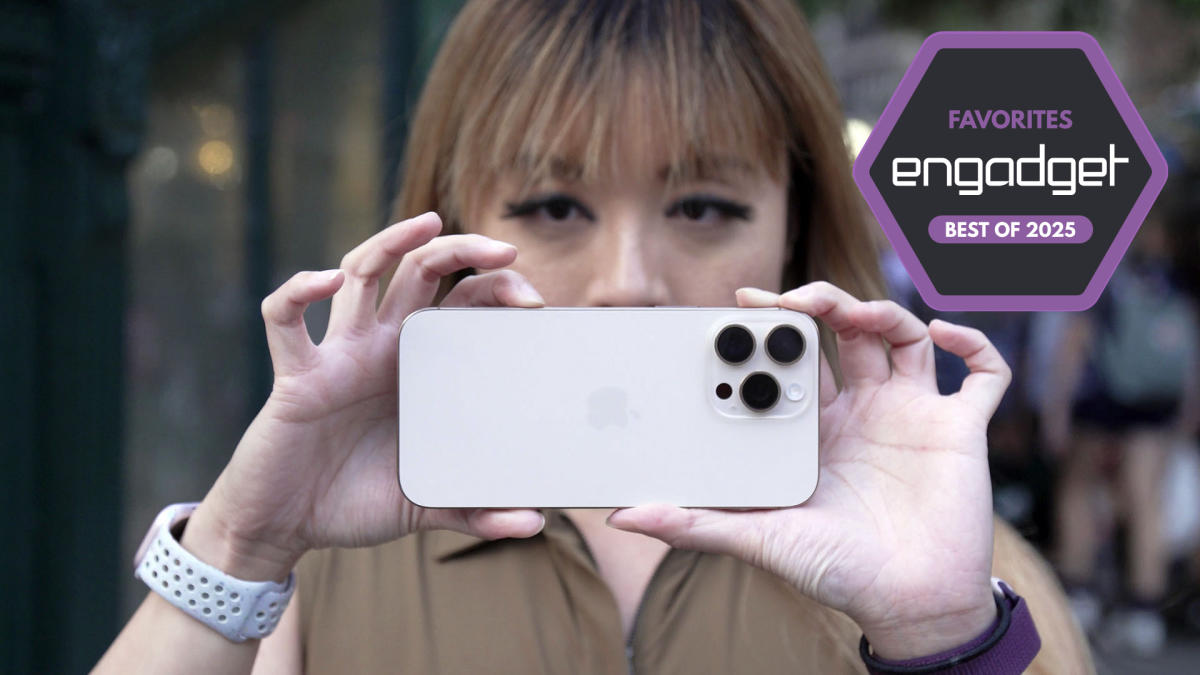Key Specifications: The iPhone 16 Pro is set to be released on September 20, 2024, and will be available in storage capacities of 128GB, 256GB, 512GB, and 1TB. It features a 6.3-inch screen, and its key features include the A18 Pro chip, an Always-on 120Hz ProMotion display, a USB-C port (USB 3), a titanium frame, a Camera Control button, an Action button, and 25W MagSafe charging. The device boasts a quad-camera setup with a 48MP wide lens, a 48MP ultrawide lens, a 12MP 5x telephoto lens, and a 12MP front camera. It comes in four color options: Natural Titanium, Desert, White, and Black. The dimensions of the iPhone 16 Pro are 5.89 x 2.81 x 0.32 inches, and it weighs 7.03 ounces.
Full Review: For a comprehensive review of the iPhone 16 Pro and iPhone 16 Pro Max, click here.
The iPhone 16 Pro stands out as the Apple device we would recommend to most users. Although its starting price of $999 may seem steep, it’s essential to consider that a smartphone is a long-term investment. If the goal is to find an iPhone that will provide satisfaction for the next three to five years, the advantages of the iPhone 16 Pro over the standard iPhone 16 and 16 Plus make it worth the extra $100-200, even if the differences are not as pronounced as in previous years.
One significant advantage of the iPhone 16 Pro is its blasted titanium frame, which exudes a higher-quality feel compared to the aluminum frame of the base iPhone 16. While it is slightly heavier than the standard 16 and last year’s iPhone 15 Pro, it is by no means excessively heavy, and its curved edges are comfortable to hold. The device is powered by the faster A18 Pro chip, which, although not drastically different in everyday tasks, offers better future-proofing, particularly for gaming and content creation. Furthermore, while all iPhone 16 models feature a USB-C charging port, the Pro models support faster data transfer speeds with the right cable.
The most notable upgrade is the display. While the OLED panels on both the iPhone 16 Pro and the standard iPhone 16 are equally sharp and bright, the Pro’s 6.3-inch screen offers more space, despite the phone itself being only slightly taller and thicker. This is largely due to the Pro’s thinner bezels, which provide more room for streaming videos and reading web pages without significantly increasing the device’s size.
In addition, the Pro’s screen features an adaptive refresh rate of up to 120Hz, making scrolling, gaming, and video streaming noticeably smoother. Although some may argue that the average person doesn’t need this feature, experiencing a faster refresh rate can be difficult to give up once you’ve tried it.
It’s worth noting that you can find a budget Android phone with a 120Hz display for around $300, yet Apple continues to use “ProMotion” as a way to upsell from devices that already cost hundreds more. Nevertheless, our goal is to recommend the best option — and the Pro’s display is indeed superior. It also features an always-on display, unlike the standard iPhone 16 and iPhone 16 Plus, allowing you to view notifications at a glance without needing to physically interact with the device.
Another significant step up is the camera system. The iPhone 16 Pro boasts a trio of rear cameras: a 48-megapixel main camera, a 48MP ultrawide shooter, and a 12MP telephoto camera. The telephoto lens is a significant addition, as the regular iPhone 16 lacks a dedicated telephoto lens altogether. Moreover, the Pro’s main camera has a larger sensor, making it better in low-light environments, and it supports portrait mode at night. You can also take sharper macro shots for close-ups, and there are other enthusiast features like the ability to shoot in ProRAW or record 4K Dolby Vision and ProRes video up to 120 frames per second.
The iPhone 16 Pro should also provide better battery life, although it’s not the longest-lasting smartphone we’ve tested. Apple rates it at up to 27 hours of video playback, up from 22 hours with the standard iPhone 16. However, both devices will likely require a recharge before bedtime. The base model’s battery is easier to replace, which is frustrating for Pro owners given the higher price.
Apple is heavily promoting each iPhone 16 based on how well they work with the new “Apple Intelligence” AI features. However, these features should not be the sole basis for purchasing decisions at this time. As of now, the features include a more robust Siri, ChatGPT integration, email and notification summaries, writing assistance, image generation tools, and a “Genmoji” custom emoji maker, among others. More updates will arrive over time.
Some of these AI features can be useful at times, but they are not game-changers in the way you use a smartphone today. Whether or not someone needs help writing a paragraph-long email or reading a brief article is debatable. For now, it’s best to view Apple Intelligence as an intriguing first step toward a potential future that may or may not be realized down the road.
While we consider the iPhone 16 Pro a great flagship, our next pick should better suit those who don’t mind a larger device and want a phone that can truly last all day.
Source Link





